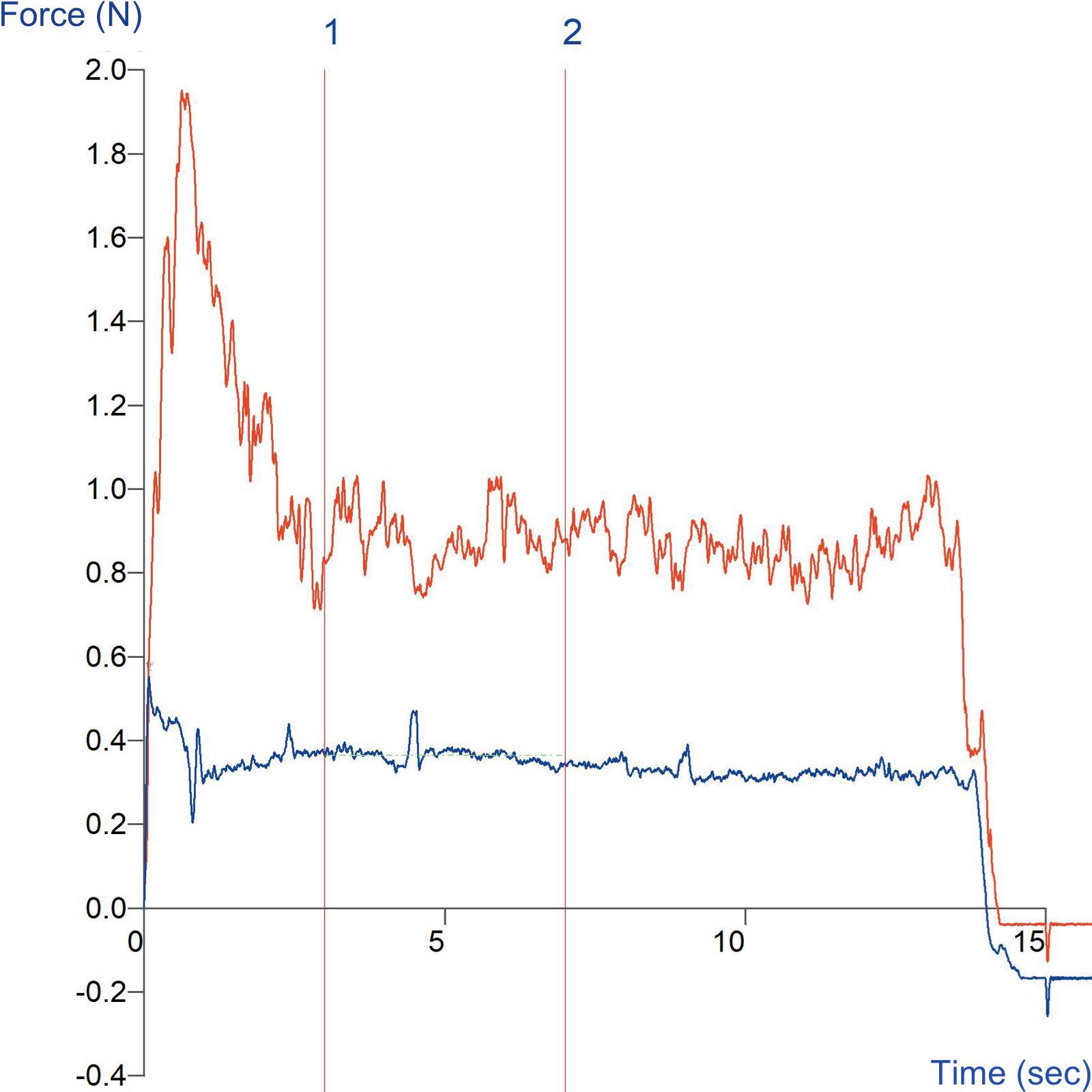How to measure abrasion

Abrasion testing: definition and importance
Abrasion refers to the erosion of material from a solid surface due to contact with another solid. Abrasive wear occurs when material is removed through contact with hard particles, either embedded in another material or existing as loose particles between two surfaces.
Abrasive materials are widely used across industries for processes like polishing, grinding, and honing. The effectiveness of these materials depends on their frictional properties, which a Texture Analyser can measure by the force required to move the abrasive material across a given surface. Parameters such as mean friction force and stick/slip can be recorded to evaluate abrasion resistance. Testing these properties allows manufacturers to determine the suitability of materials for specific applications and to compare different grades or brands of abrasives.
Further example applications of abrasion testing
Abrasion testing is essential in various industries within manufacturing, materials science, and quality control.
- Manufacturing: Testing the durability of materials used in construction and industrial applications to ensure they can withstand wear during use.
- Materials science: Comparing different abrasive materials to assess their efficacy for polishing or grinding applications, helping manufacturers choose the best material for their needs.
- Quality control: Evaluating the abrasion resistance of consumer products, such as flooring or coatings, to ensure long-term durability and product satisfaction.
In these tests, the Texture Analyser plays a key role in simulating abrasion or rubbing forces on materials. The resulting data can help manufacturers improve the performance, durability, and overall quality of their products. Abrasion testing is closely related to friction testing, providing further insights into the interaction between surfaces under wear.
Typical probe/attachment used for measurement
Abrasion Test Rig
In a typical abrasion test using the Abrasion Test Rig, a sample of the abrasive material is held in place in a self-tightening grip. As the test is carried out, the arm of the Texture Analyser draws the sample under and around a cylinder at 90 degrees and the force required to pull the material is recorded.
How to interpret the Texture Analyser graph
 Typical curve indicating key analysis points of an abrasion test
Typical curve indicating key analysis points of an abrasion test
When measuring abrasion, the force vs distance/time graph typically shows a multi-peak profile that can provide insight into how a material withstands rubbing or scraping. From the graph you can observe/obtain the following:
- Mean friction force
- Stick/slip characteristics
- Abrasion resistance
A full explanation of this curve and its analysis can be accessed within Exponent Connect software. Existing Exponent users can upgrade to Exponent Connect specification.
Below is a video example of how we can help you understand curve analysis for an example property.
Key factors affecting abrasion measurement
Surface properties: The texture, roughness, and hardness of the sample surface significantly impact abrasion measurements.
Humidity: Ambient humidity levels can affect the friction between the abrasive surface and the sample, potentially altering abrasion results.
Test speed: The rate at which the abrasive surface moves across the sample can influence the measured results, as materials may respond differently to varying speeds of abrasion.
Surface cleaning: The cleanliness of the sample surface prior to testing can influence initial abrasion behaviour.
Sample conditioning: Pre-test conditioning of samples (e.g., temperature, humidity) can affect their abrasion resistance.
Collecting additional measurements during your test

Acoustic Envelope Detector
The Acoustic Envelope Detector can by employed for any material which produces an audible noise when tested as it captures another dimension (i.e. sound) during the test which can also be analysed and used as a measured product feature.
Optimising abrasion measurement and analysis: The Stable Micro Systems advantage
Accurate measurement of abrasion requires precise analysis of fluctuating curves, with multiple peaks and troughs. Exponent Connect software enhances accuracy by capturing data at 2000 points per second, providing highly detailed graphs for in-depth analysis. In contrast, lower data collection rates, often found in alternative equipment, can result in compromised accuracy and missed information, impacting the reliability of the results.
The Stable Micro Systems Texture Analyser is recognised as the best choice for optimising the measurement of abrasion due to its advanced features and capabilities tailored specifically for assessing frictional properties in various materials.
Including specially designed Abrasion Test Rig.
Precision analysis of fluctuating abrasion curves, with multiple peaks and troughs.
Ability to additionally measure sound using an Acoustic Envelope Detector.
High detailed graphs captured for in-depth analysis.
If you need help with your abrasion measurement, we offer unrivalled support.
Be guided through the steps to successful testing and analysis of abrasion.



